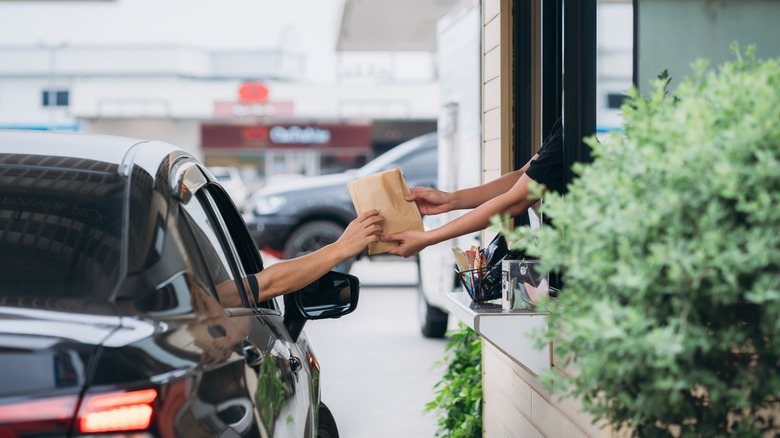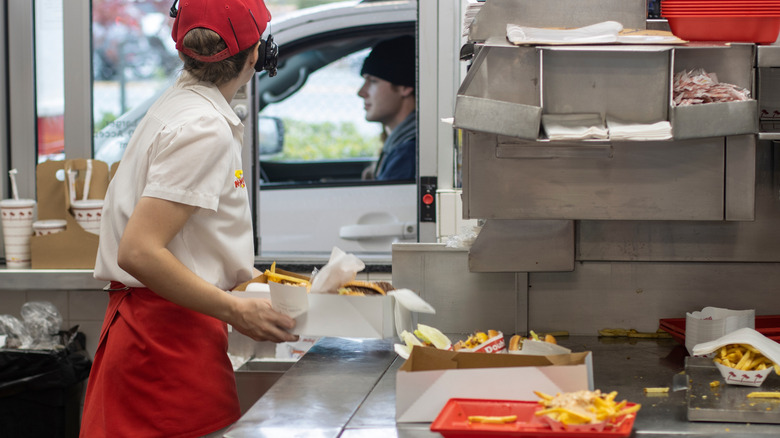The Fast Food Chain That Revolutionized How We Order In Drive-Thrus
In 1948, In-N-Out Burger became the first fast-food chain to roll out a real drive-thru system, powered by Harry Snyder's two-way speaker box. Until then, the standard was either carhops weaving between bumpers with trays or cooks shouting orders through a window while trying to keep an eye on the grill. Both methods slowed things down, clogged parking lots, and left kitchens scrambling. Snyder's speaker changed all of that, creating a clear system where drivers could order without ever stepping out of the car.
The Baldwin Park outpost where it debuted was hardly more than a shack — a sliver of space that didn't look like the birthplace of a fast-food revolution. But Snyder was a hands-on tinkerer. After closing up for the night, he went home and sketched, wired, and adjusted until the speaker setup was reliable enough to handle the dinner rush. By separating the order-taking from the cooking, he unclogged the bottleneck that had plagued so many early burger joints.
Though In-N-Out has always kept its footprint small compared to national giants, its influence was anything but. As one of the oldest fast-food chains in the country, the brand didn't just flip burgers — it gave the industry a playbook for how the modern drive-thru should function.
How one speaker box reshaped fast food
Harry Snyder's late-night tinkering in Baldwin Park didn't just solve his own traffic jam — it sparked a blueprint the rest of the industry rushed to copy. By the 1960s, chains like Jack in the Box and Wendy's were experimenting with the same model, and McDonald's eventually joined in during the mid-1970s. Once the format proved itself, fast food menus were retooled to match. Burgers stayed at the center because they were portable, but chains also came up with taco shells that wouldn't drip all over your lap and chicken cut into neat little pieces perfect for snacking between stoplights.
The new setup also made the dining process remarkably simple. At the drive-thru, your only job is to know what you want and keep the line moving. The rest is built for speed — a voice on the intercom, a bag at the window, and you're back on the road. The ripple effect extended beyond restaurants, too. By the late '80s, automakers were building cars with more cup holders and storage spots than passengers, a quiet acknowledgment that drive-thru meals had become a part of everyday life.
With convenience at its core, the drive-thru has developed its own set of rules of etiquette. Nobody wants to sit behind the car fumbling for their wallet and making the drive-thru ordering mistake of not having their payment ready. Those unwritten rules exist because of a system that In-N-Out pioneered — one small speaker box that reshaped how Americans eat, drive, and even design their cars.

